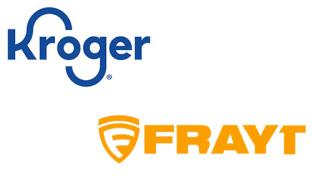Why Grocers Should Leverage Third-Party Sellers
As more Americans shop online than ever before, digital marketplace giants like Amazon and Walmart, with massive third-party seller capabilities, have come to dominate and set new expectations for retail assortment and fulfillment. One-stop shops offer exceptional convenience with what feels like infinite products available on a single platform.
To date, grocery has been the exception, with traditional grocery retailers like Kroger outselling Amazon by a significant margin, even following Amazon’s 2017 acquisition of Whole Foods Market. Online grocery has lagged behind other e-commerce verticals, but it’s very quickly catching up. The coronavirus pandemic has put in place circumstances that could never have been predicted, but which have perfectly primed consumers to finally open up to grocery e-commerce.
As the market matures, the challenge for traditional grocery retailers will be to keep up with big-box stores like Walmart, which recently launched a new Prime-like, subscription-based, same-day delivery service, and digitally born marketplace giants like Amazon, which are growing to dominate the food and consumables industry. A potential strategy for traditional grocers to maintain and grow share is expanding their inventory via the creation of a marketplace setup with third-party vendors supplementing their assortments.
GRADUAL SHIFT
We’re gradually seeing a shift with grocery retailers as they open up their e-commerce platforms to third-party sellers to better compete with retail giants that offer grocery and products from nearly all retail verticals.
Although the initiative is currently on hold while improvements are being made, Albertsons led the charge in 2018 with the launch of Albertsons Marketplace, which offered specialty goods from artisan third-party sellers. With products delivered directly from manufacturers with varying shipping costs and delivery times, the initial iteration potentially didn’t appeal to consumers who were used to the streamlined efficiency of Amazon and its massive fulfillment centers.
With the recent rollout of its Ship functionality and signs that it’s exploring the launch of a third-party marketplace, Kroger is testing the waters of such a model as well. As the leading traditional grocery retailers explore options, we could be witnessing the beginning of a major industry transformation, with many traditional retailers looking to leverage third-party sellers to better compete with online marketplaces.
For traditional grocers, offering products from third-party sellers will help diversify revenue streams and capture sales from categories not traditionally sold in their stores. As they’ve operated primarily in food, a low-margin category, increased sales from nonfood items provide an avenue for grocery retailers to increase margins with more profitable and higher-ticket products.
THE CHALLENGE OF LAST-MILE FULFILLMENT
For national grocers, however, last-mile fulfillment will be a major challenge. While there’s the potential to use and leverage current delivery and pickup capabilities and distribution centers, adding in third-party vendors will mean far more inventory to manage, from a larger variety of sources. Amazon offers to ship items to consumers directly from their warehouses for third-party sellers. While this approach would allow grocers to enter into the online marketplace business with a bang, it’s a major logistical challenge for retailers that have struggled to make grocery delivery profitable on its own, and would be necessary to offer consumers the convenience that they’ve come to expect.
As for the overall economic impact, increased grocery retailer channel options for third-party sellers may give them additional leverage with Amazon. As grocers have the potential to diversify their revenue streams with third-party sellers, those same sellers can diversify their own channels and leverage the household names of major grocers. This could help balance the playing field for all involved and make the industry a more competitive environment.
But with all these potential benefits, grocers will need to be mindful of the potential that this tactic has to erode their brands. Amazon is deliberately “the everything store” and Walmart promises “everyday low prices,” allowing both of them to explore all verticals while remaining true to their respective missions and visions.
For traditional grocery retailers, their bread and butter — pun fully intended -— is food and beverages, which are what consumers have come to expect. Expanded options could diminish identities built around freshness, service and local convenience. While profit margins for non-grocers may be higher, grocers must be careful not to forget why consumers visit their stores in the first place.







